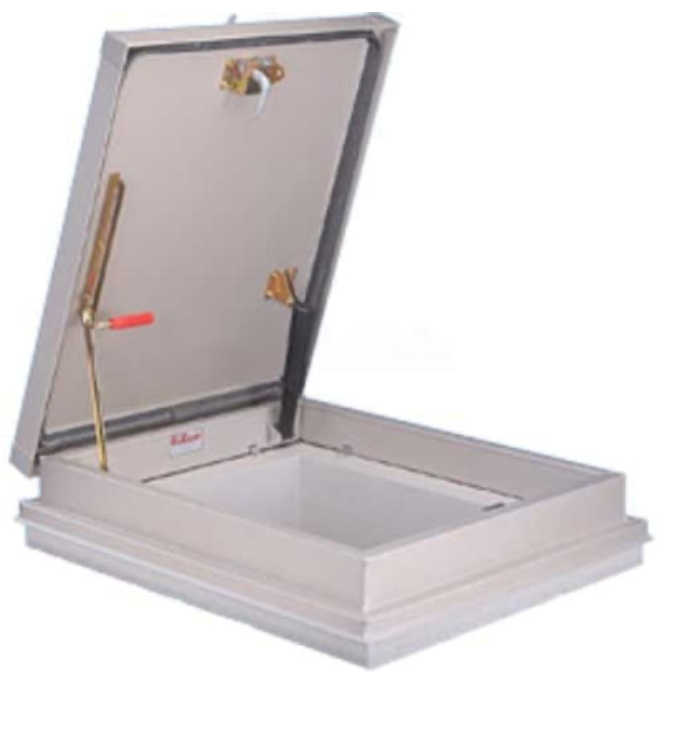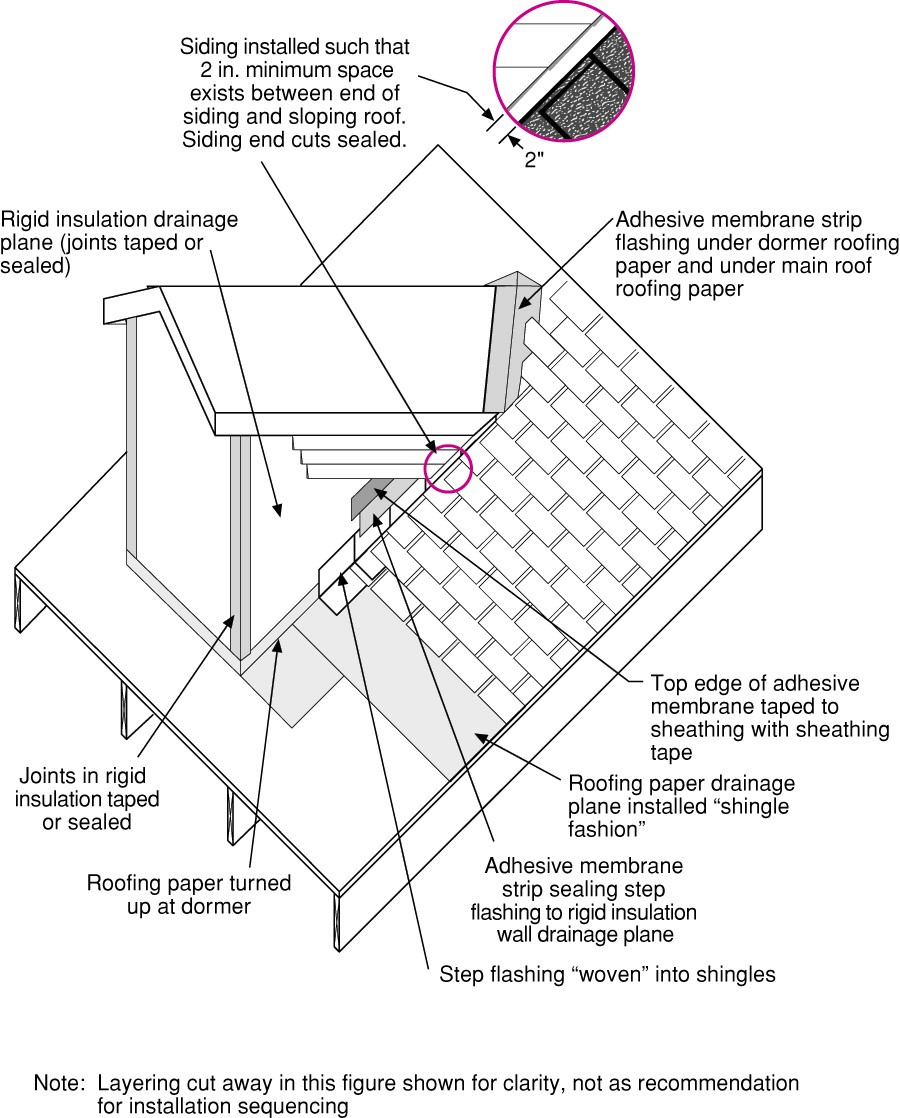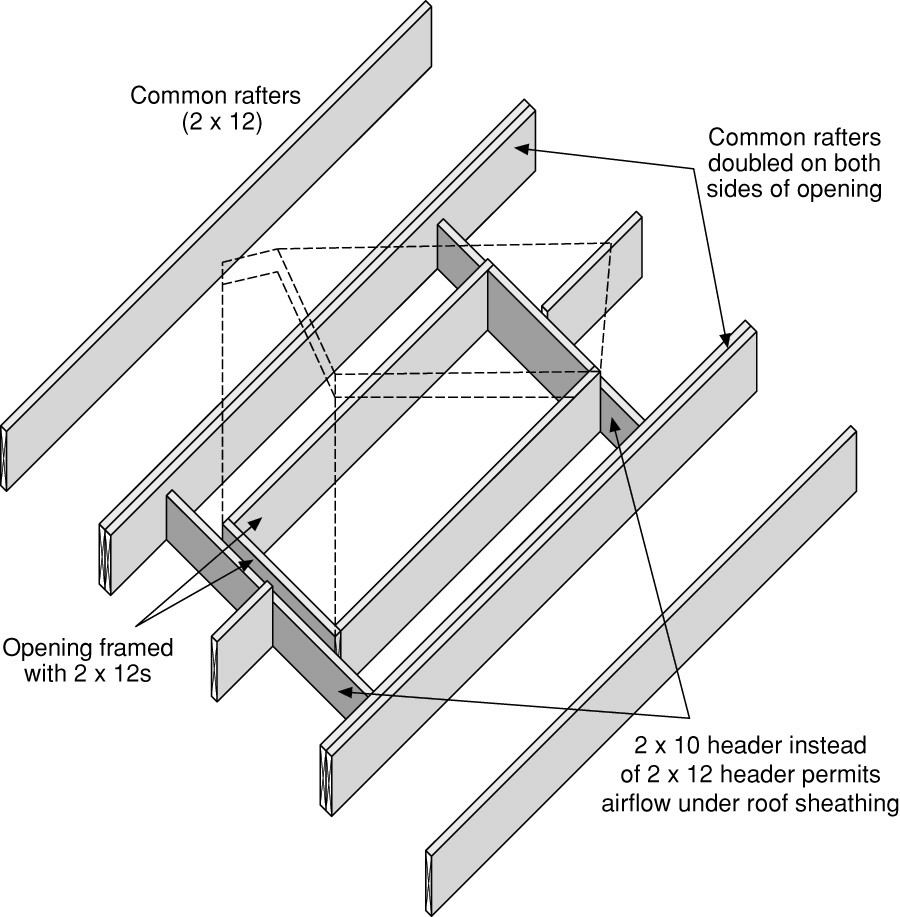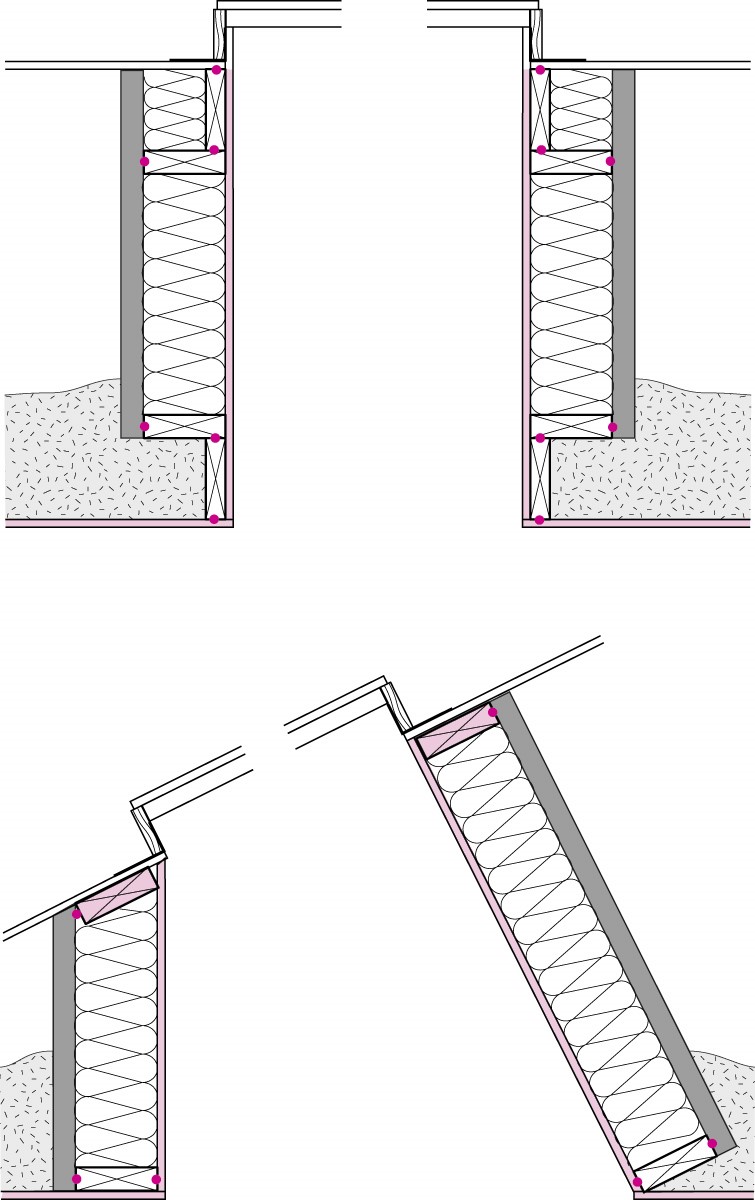Scope
In extreme-flood-prone and coastal regions, design and construct openings providing occupants with a safe means of access and escape to the roof:
- Install an openable dormer window, skylight, or roof hatch that meets minimum code dimension requirements.
- Minimum egress dimensions are 20 inches wide by 24 inches high, providing a net clear opening of at least 821 square inches (5.7 square feet).
- Egress openings should not be higher than 44 inches above a floor or landing surface or must have permanent access via a ladder, stair, or ramp.
See the Compliance tab for links to related codes and standards and voluntary federal energy-efficiency program requirements.
Description
In extreme flood events, evacuation of building occupants may become necessary. Flood waters may rise quickly enough to prevent ground-based evacuation and it may be necessary for occupants to seek temporary shelter in the upper portions of buildings until evacuation can occur. The last place of available refuge is typically a roof. Installing a means of accessing the roof is recommended in high-flood-risk areas.
Most building codes require egress openings with minimum dimensions of 20 inches wide by 24 inches high providing a net clear opening of at least 821 square inches (5.7 square feet). (See IRC R310 Emergency Escape and Rescue Openings, Sections 2.1, 2.2, 2.3, and R326.) A roof opening meeting this requirement can be provided by a commercially available “roof hatch” (see Figures 1 and 2), an operating skylight, or a dormer with windows of sufficient net open area (see Figure 3). Figure 1 also shows exterior walls that are insulated and constructed as flood-resistant “wash and wear” walls by using water-resistant rigid foam and high-density spray foam that is coated with acrylic latex paint. Figure 3 also shows appropriate insulation, air sealing, and flashing details so that dormers that are constructed on the roof do not become a source of air or water leakage or unnecessary heat loss.



Rafters or roof trusses are typically spaced 16 or 24 inches on center. Commercially available roof hatches typically have dimensions of 30 inches by 36 inches. Rafters on each side of the hatch location can be doubled to provide extra strength for the blocking above and below the opening, as shown in Figure 4. Another option would be to install a skylight with a minimum rough frame opening of 22 inches wide by 42 inches long; this would also meet the building code egress requirements.

For a skylight to be used as an egress opening, the skylight must be openable for its entire area.
Any egress opening should not be higher than 44 inches above the floor or landing surface or must have permanent access via a ladder, stair, or ramp. See Figure 5.

In vented attic assemblies, the shaft connecting the skylight or hatch to the insulated ceiling should be insulated and air sealed as part of the home’s exterior envelope (Figure 6).

Homeowner Preparation for Flooding
The following list provides flood preparation tips for homeowners. For more information see the flooding page from Ready.Gov and Flood Preparedness.
- Do not try to escape rising floodwater by going into the attic unless you have roof access or unless it’s your only option.
- Know your risk. Look at the FEMA flood maps.
- Create an emergency supply kit.
- Develop an evacuation and family communications plan and share it with your family members.
- Keep storm drains clear. If your property is prone to flooding, have sandbags, plastic sheeting, and other flood-fighting materials on hand.
- Learn how to turn off water, gas, and electricity connections to your home in the event that your home is flooded. Contact your local utility companies for guidance.
- During a flood watch or warning: Listen to the radio, TV, or check the Internet to see whether a flood watch or flood warning for your area. A flood watch means that flooding is possible. A flood warning indicates that flooding is imminent or occurring. Evacuate if told to.
- Consider flood insurance. Most homeowners’ insurance policies do not cover flood damage. Ask your insurance agent about obtaining flood insurance from the National Flood Insurance Program.
Success
In extreme flood events, building occupants may need to evacuate. Flood waters may rise quickly enough to prevent ground-based evacuation and it may be necessary for occupants to seek temporary refuge on the roof. A means of accessing the roof is recommended in high-risk flood areas.
Most building codes require egress openings with minimum dimensions of 20 inches by 24 inches providing a net clear opening of at least 821 square inches (5.7 square feet). A roof opening meeting this requirement can be provided by a roof access product, an operating skylight, or a dormer with windows of sufficient net open area.
Climate
See the FEMA flood maps website for an assessment of the risk of flooding in your location.
See the FEMA tsunami maps website for an assessment of the risk of tsunamis in your location.
Training
Compliance
Retrofit
Roof access hatches and openable skylights can be installed as a retrofit measure. Existing dormers could be considered for egress if window openings are or could be enlarged to provide adequate space for exiting.
More
More Info.
Access to some references may require purchase from the publisher. While we continually update our database, links may have changed since posting. Please contact our webmaster if you find broken links.
Guidelines for Design of Structures for Vertical Evacuation from Tsunamis, Third Edition, FEMA P-646
The following authors and organizations contributed to the content in this Guide.
Building Science Corporation
Pacific Northwest National Laboratory


